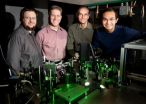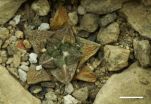IOF and ESCEO position on atypical femoral fractures and long-term bisphosphonate use
2010-11-25
(Press-News.org) Leading experts from the European Society on Clinical and Economic Aspects of Osteoporosis and Osteoarthritis (ESCEO) and the International Osteoporosis Foundation (IOF) have published a timely position paper on the association between subtrochanteric femoral (upper thigh bone) fractures and long-term treatment with bisphosphonates.
Bisphosphonates are the most common drug therapy for osteoporotic fracture prevention, prescribed to millions of people around the world. Concern among doctors and patients has arisen following recent media reports that cite a possible association between unusual and unexpected (atypical) fractures of the upper thigh bone and bisphosphonate use.
The Position Paper examines the evidence and concludes that:
Atypical fractures in association with bisphosphonate use are rare, estimated at one per 1,000 patients per year.
Small clinical case reports and reviews have reported increased risk of these fractures among bisphosphonate users, but a large register-based study and restrospective analyses of phase III trials of bisphosphonates do not show an increased risk.
More epidemiological research and well-designed studies are needed to clearly define and characterize atypical fractures and to learn about other risk factors in patients who have suffered these fractures.
Available evidence shows that the well-known benefits of bisphosphonate treatment outweigh the relatively low risk of these rare, atypical fractures.
"The risk versus benefit ratio is clear," stated Professor René Rizzoli of the Division of Bone Diseases at the University of Geneva and lead author of the Position Paper. "We estimate that for every 10,000 high-risk patients undergoing bisphosphonate treatment, approximately 100 hip fractures and 750 fractures at other sites are prevented, whereas only 3 to 6 atypical fractures could be expected."
"While we urge patients to discuss their concerns with their doctors, it is important that they do not stop taking their prescribed bisphosphonate therapy and so leave themselves open to the higher risk of osteoporotic fracture." He went on to state that doctors should, as with all drug treatments, advise patients of any potential side effects or risks. Patients with pain in the hips, thighs or femur should be radiologically assessed, and examined for possible atypical subtrochanteric fracture. The radiographic changes should be examined for orthopaedic intervention or close monitoring. The decision regarding therapy should be based on an individual benefit-risk assessment.
###
The Position Paper 'Subtrochanteric fractures after long-term treatment
with bisphosphonates: a European Society on Clinical and Economic Aspects of Osteoporosis and Osteoarthritis, and International Osteoporosis Foundation Working Group Report'
(Osteoporos Int DOI 10.1007/s00198-010-1453-5) is freely accessible online at Springerlink.com
ABOUT IOF
The International Osteoporosis Foundation (IOF) is a non-profit, nongovernmental organization dedicated to the worldwide fight against osteoporosis, the disease known as "the silent epidemic". IOF's members – committees of scientific researchers, patient, medical and research societies and industry representatives from around the world – share a common vision of a world without osteoporotic fractures. IOF now represents 195 societies in 93 locations around the world. http://www.iofbonehealth.org
ABOUT ESCEO
The European Society for Clinical and Economic Aspects of Osteoporosis and Osteoarthritis (ESCEO) is a non-profit organization dedicated to fostering a close interaction between clinical scientists dealing with rheumatic disorders, pharmaceutical industry developing new compounds in this field, regulators responsible for the registration of such drugs and health policy makers, to integrate the management of osteoporosis and osteoarthritis within the comprehensive perspective of health resources utilization. http://www.esceo.org
END
ELSE PRESS RELEASES FROM THIS DATE:
2010-11-25
CAMBRIDGE, Mass. -- In a new study to be published in the Nov. 25 issue of Nature, MIT cancer biologists show that restoring the protein p53's function in mice with lung cancer has no effect early in tumor development, but restoring the function later on could prevent more advanced tumors from spreading throughout the body.
Cancer researchers have known since the 1980s that p53 plays a critical role in protecting cells from becoming cancerous. P53 is defective in about half of all human cancers; when it functions correctly, it appears to suppress tumor formation by preventing ...
2010-11-25
CHAMPAIGN, Ill. – The long, anxious wait for biopsy results could soon be over, thanks to a tissue-imaging technique developed at the University of Illinois.
The research team demonstrated the novel microscopy technique, called nonlinear interferometric vibrational imaging (NIVI), on rat breast-cancer cells and tissues. It produced easy-to-read, color-coded images of tissue, outlining clear tumor boundaries, with more than 99 percent confidence – in less than five minutes.
Led by professor and physician Stephen A. Boppart, who holds appointments in electrical and computer ...
2010-11-25
MEDFORD/SOMERVILLE, Mass. -- Some of the universe's most massive galaxies may have formed billions of years earlier than current scientific models predict, according to surprising new research led by Tufts University. The findings appear in the Astrophysical Journal published online Nov. 24 in advance of print publication on Dec. 10, 2010.
"We have found a relatively large number of very massive, highly luminous galaxies that existed almost 12 billion years ago when the universe was still very young, about 1.5 billion years old. These results appear to disagree with ...
2010-11-25
Children living in disadvantaged neighbourhoods are more likely to succeed if they participate in a community-based prevention program, according to findings released recently from a multi-year research study based at Queen's University.
Children participating in the Better Beginnings, Better Futures (BBBF) project showed improved social and academic functioning. The project also impacted positively on families and on neighbourhoods.
"The results from our study indicate that the project has been a success," says Queen's psychology professor emeritus Ray Peters, the ...
2010-11-25
Electrical engineers generated short, powerful light pulses on a chip – an important step toward the optical interconnects that will likely replace the copper wires that carry information between chips within today's computers. University of California, San Diego electrical engineers recently developed the first ultra compact, low power pulse compressor on a silicon chip to be described in the scientific literature. Details appeared online in the journal Nature Communications on November 16.
This miniaturized short pulse generator eliminates a roadblock on the way to ...
2010-11-25
A new chemical analysis technique developed by a research group at the National Institute of Standards and Technology (NIST) uses the shifting ultrasonic pitch of a small quartz crystal to test the purity of only a few micrograms of material. Since it works with samples close to a thousand times smaller than comparable commercial instruments, the new technique should be an important addition to the growing arsenal of measurement tools for nanotechnology, according to the NIST team.
As the objects of scientific research have gotten smaller and smaller—as in nanotechnology ...
2010-11-25
Suspicious packages and powders have triggered more than 30,000 responses by U.S. law enforcement agencies across the country since 2001. These events are expensive, time-consuming and potentially dangerous. To help first responders at all levels of government deal safely and more effectively with suspected biothreat agents, the National Institute of Standards and Technology (NIST) and a broad team of federal, state and local agencies and other organizations worked together to update an existing standard for sample collection and develop overall guidance for when to collect ...
2010-11-25
As the cholera epidemic in Haiti continues to rage, public health workers are focusing their efforts on treating the tens of thousands who have already been hospitalized with cholera-like symptoms and providing clean water and adequate sanitation to control the disease's spread.
Could the United States be doing more to help the situation? In an editorial published in the November 24, 2010, issue of the New England Journal of Medicine, vaccine and infectious disease specialists Matthew Waldor of the Howard Hughes Medical Institute, Peter Hotez of George Washington University ...
2010-11-25
In the scorching summer heat of the Chihuahuan Desert in southwest Texas, air temperatures can hover around 97°F (36°C) while at the surface of the soil temperatures can exceed 158°F (70°C). Encountering these extreme temperatures, plants must utilize creative methods to not only survive but thrive under these difficult and potentially lethal conditions.
This new work by Dr. Gretchen North and colleagues, published in the December issue of American Journal of Botany (http://www.amjbot.org/cgi/reprint/ajb.1000286v1), sheds light on how one desert resident, the cactus ...
2010-11-25
Scientists have discovered an amazingly simple way that cells stabilize their machinery for forcing apart chromosomes. Their findings are reported Nov. 25 in Nature.
When a cell gets ready to split into new cells, this stable set-up permits its genetic material to be separated and distributed accurately. Otherwise, problem cells – like cancer cells— arise.
The human body contains more than a trillion cells, and every single cell needs to have the exact same set of chromosomes. Mistakes in moving chromosomes during cell division can lead to babies being born with ...
LAST 30 PRESS RELEASES:
[Press-News.org] IOF and ESCEO position on atypical femoral fractures and long-term bisphosphonate use




